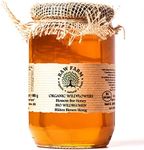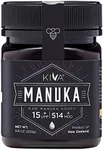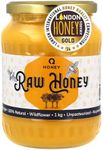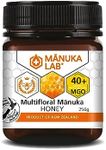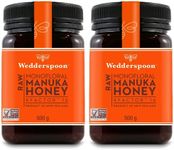Buying Guide for the Best Raw Honeys
When choosing raw honey, it's important to understand that not all honey is created equal. Raw honey is honey that has not been pasteurized or filtered, preserving its natural enzymes, vitamins, and minerals. This type of honey is often sought after for its potential health benefits and unique flavors. To find the best raw honey for your needs, consider factors such as flavor, origin, texture, and potential health benefits. Understanding these key specifications will help you make an informed decision and enjoy the full benefits of raw honey.Flavor ProfileThe flavor of raw honey can vary greatly depending on the flowers from which the bees collect nectar. This is important because the taste can range from mild and sweet to bold and robust, affecting how you might use it in cooking or as a sweetener. Generally, lighter honeys like clover or acacia are milder, while darker honeys like buckwheat or manuka have a stronger taste. To pick the right one for you, consider how you plan to use the honey. If you want a versatile honey for tea or baking, a milder flavor might be best. For a more pronounced taste, perhaps for drizzling over cheese or yogurt, a stronger flavor could be more suitable.
OriginThe origin of raw honey refers to the geographical location where it was produced. This is important because different regions can produce honey with distinct flavors and properties due to the local flora. Honey from different areas can also have varying levels of pollen, which might be beneficial for those seeking local honey for allergy relief. When choosing honey, consider whether you want to support local beekeepers or if you're interested in trying honey from a specific region known for its unique taste or health benefits.
TextureTexture in raw honey can range from smooth and runny to thick and crystallized. This is important because it affects how you might use the honey. Runny honey is easy to drizzle and mix, making it ideal for sweetening drinks or topping foods. Crystallized honey, on the other hand, is spreadable and can be used like a butter or jam. To choose the right texture, think about how you plan to use the honey. If you prefer a liquid sweetener, opt for a smoother texture. If you like to spread honey on toast or use it as a topping, a thicker, crystallized honey might be more suitable.
Potential Health BenefitsRaw honey is often valued for its potential health benefits, which can include antibacterial properties, antioxidants, and enzymes that aid digestion. This is important for those looking to incorporate honey into their diet for health reasons. Different types of honey may offer varying levels of these benefits. For example, manuka honey is renowned for its strong antibacterial properties. When choosing honey for health benefits, consider what specific benefits you are seeking. If you're looking for general wellness support, most raw honeys will suffice. For targeted health benefits, research specific types of honey that are known for those properties.




